Paving has been ideal for a wide range of landscaping projects. If you’re in need of a new patio or landscaping solution, check out our guide to paving to help you make a decision that can suit your requirements.
Table of contents:
Choosing which paving stones to use
There are many different types of paving to choose from. Here are some of the benefits and drawbacks of each type to help you understand them.
| Type of paving | Uses | Pros | Cons |
| Slabs | •Pathways •Patios | •Easy to clean •Large paving stones •Covers a big space | |
| Blocks (aka block paving) | •Patios | •Low maintenance •Easy to replace single blocks •Easy to install •Porus to allow rainwater to be absorbed - capable of drainage support •Cost effective •Shaped like bricks •Can be smaller or thicker than slabs •Variety of colours •Variety of designs •Modern appearance •Durable •Can be used as decorative edging around patios | •Might not be as unique |
| Gravel | •Patios •Pathways •Driveways | •Low maintenance •Modern appearance •Variety of colours •Variety of designs •Variety of textures •Can be used to create curves and waves •Can go alongside other paving features | •Needs a waterproof membrane beneath it for weed-free patio and clean edges •Needs a gravel pave system pack to keep gravel or stones in place; especially if creating a driveway or pathway •Needs to be bought in bulk if you're unsure about how much is needed |
Paving stone materials
Paving comes in a vast array of materials which can be beneficial when you’re looking for defining features.
| Type of material | Pros | Cons | Uses |
| Stone | •100% natural/organic stone •Unique •Variety of colours •Rustic appearance •Durable •Less likely to crack or break •Can endure winter weather •High porosity •Long-term use | •Sealing will be needed to ensure stones continue lasting long-term | •Used for high football paths;areas that might feature garden tables or chairs |
| Porcelain | •Modern •Contemporary •Stylish •Elegant •Smooth surface •10mm thickness on some types can be used indoors for a house to garden flow •High resistance to scratches and stains •Low maintenance •High durability •Unaffected by colour fading | •More expensive, but long term cost -effective solution | |
| Concrete (aka reconstituted stone, engineered stone, artificial stone or cast stone) | •Manufactured from natural mix stone chippings •Variety of colours •Man-made •Replicates the look and feel of natural stone •Variety of colours •Popular •Variety of styles •Variety of textures •Ideal replica to high-end natural slabs •Low or high cost depending on style •Budget-friendly solution •Flexible design •Durable •Little maintenance – annual maintenance of sealing recommended for stain and algae prevention to continue •Long-term use | •Low or high cost depending on style | |
| Slate | •Hand selected •Timeless style •Natural •Hand-riven •Diamond-sawn •Modern •Multi-coloured styles | •Can be costly | •Patios •Traditional and contemporary gardens |
| Limestone | •Natural •Fine detailing •Natural veining •Consistent colouring •Sleek •Tidy •Durable finish | •Limited colours | •Contemporary and traditional settings |
| Granite | •Consistent colours •Sharp edges for contemporary appearance •Stylish •Strong •Resilient •Can be supplied as a garden stepping stone | •Can be costly depending on certain colours | •Garden stepping stone |
| Sandstone | •Variety of tones •Variety of riven profiles •Variety of natural veining •Rustic style •Variety of colours •Can be matched with stepping stones | •At higher risk of mould •Can be at higher risk of water absorption •At higher risk of scratching •Low slip resistance •At higher risk of stains •Higher risk of appearance going dull | •Circle focal feature •Country gardens •Cottage gardens |
Paving stone laying patterns
The pattern depends on the type of paving, although patterns aren’t limited to one style of paving slab, block or gravel.
Contemporary laying patterns and examples
Your contemporary style will be more suited to such materials as:
- Limestone
- Granite
- Porcelain
- Slate
Using these materials doesn’t have to be difficult either. In fact, if you’re laying the paving yourself and are new to it then consider the brick/stretcher bond pattern. This pattern is similar to that of a typical brick wall, with a simple and uniform appearance.
Here are a few designs that offer a further contemporary appearance.
Herringbone: This style can be used for interior or exterior projects. It offerings that little bit of uniqueness without losing a completely uniform appearance. It’s popular with many block paving DIYers for not only the design but also its uses.
Herringbone is desired for its ability to prevent extended continuous joints from developing. It is typically described as fully interlocked, which is what people adore about the design of pavements.
As a general design, the herringbone can be put at a 90° degree angle or can be put at a 45° degree. Though the 90° angle is typically considered easier to do.
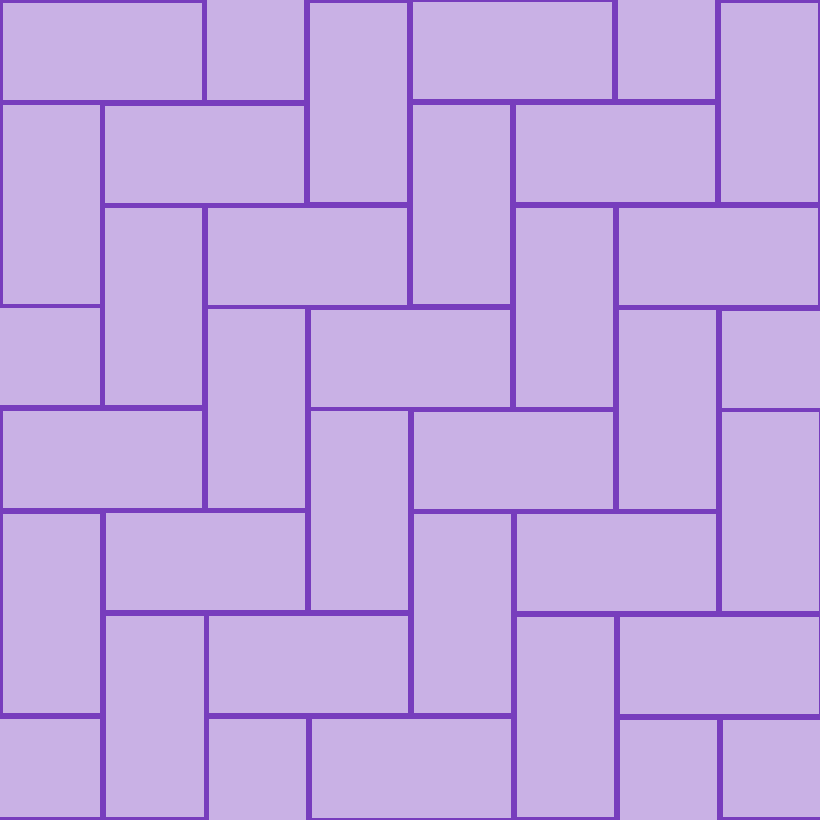
Basketweave: This pattern refers to how the slabs for the paving “disappear” beneath other slabs which are set at a 90° angle, then appear on the opposite side as if it has been “woven” in place with other slabs. There are a variety of different types of basketweave styles, including the double basket weave pattern.
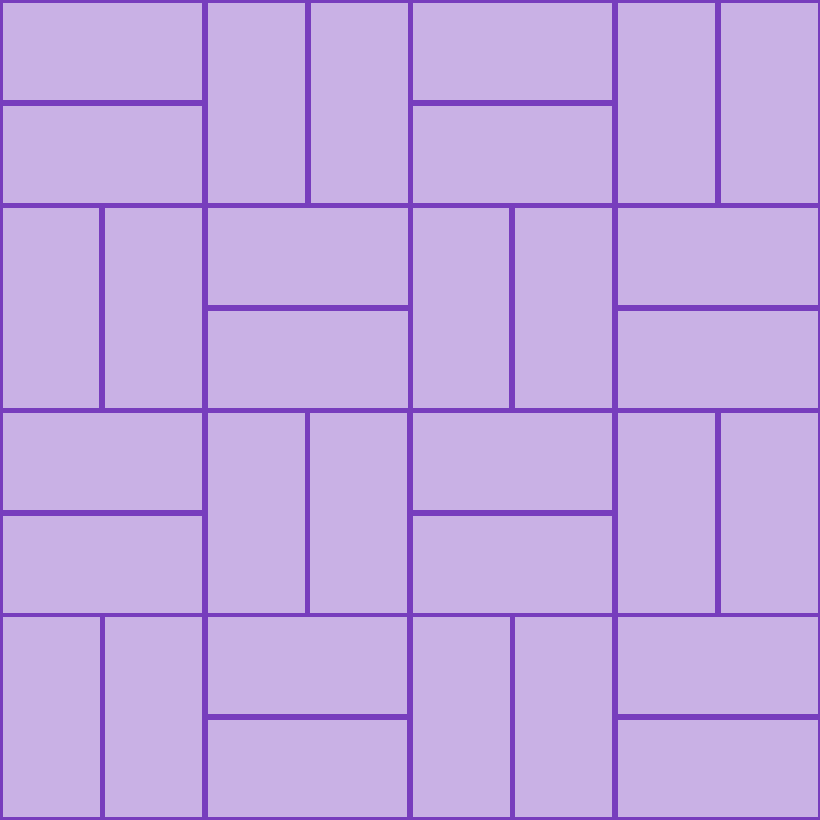
Header and border designs: This design combines the brick/stretcher bond pattern with a typical line design going around the edge to create the image of a border going around the main pattern.
Stretcher bond
This design offers a simple paving style with a slight visual offset for that randomness effect; without going too far. Also referred to as a running bond or half bond, this particular paving style is used to imitate a brick style that would typically be seen on the side of a house. The first row is laid down horizontally. From there you alternate laying the rows with an offset measurement of half a brick until the paving is complete.
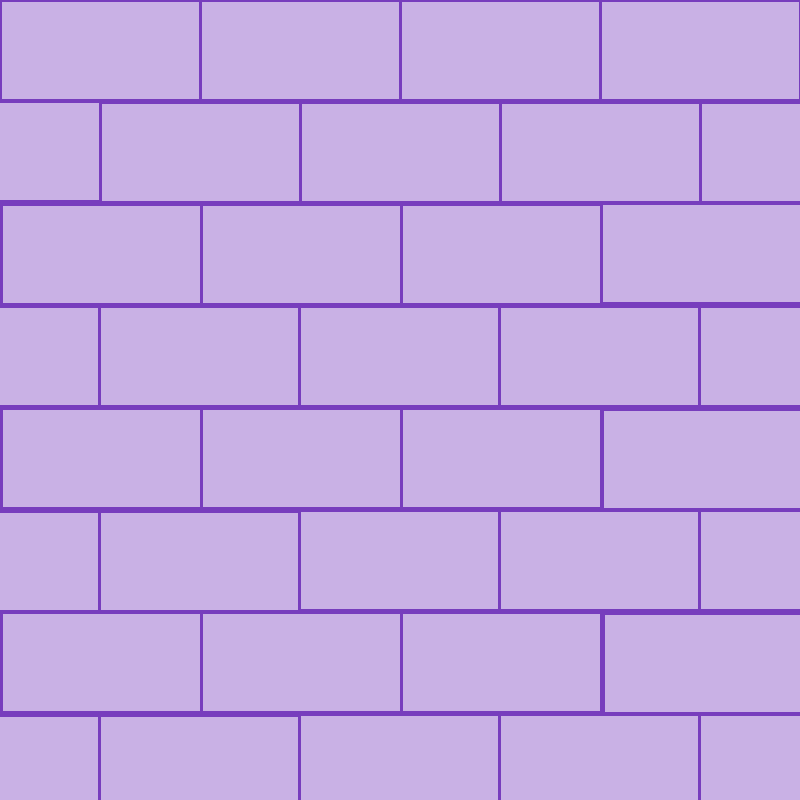
Traditional laying patterns and examples
Random layouts are one of the most traditional choices when it comes to laying paving. Typically these designs will combine multiple factors:
- At least three different-sized slabs
- No directional line layouts
- No repeating pattern
All these factors contribute to the “random” design. Here are some well knows examples of random layouts you can incorporate into your paving design:
Broken bond: The broken bond layout is one that has no maximum number when it comes to the size of different slabs you can use in its design. Typically it is advised, however, that you use at least three different types of slabs to ensure there is a random effect.
Another thing to note about the broken bond pattern is that it is popular for being arranged in a historic style. More commonly known as the “transverse” broken bond layout.
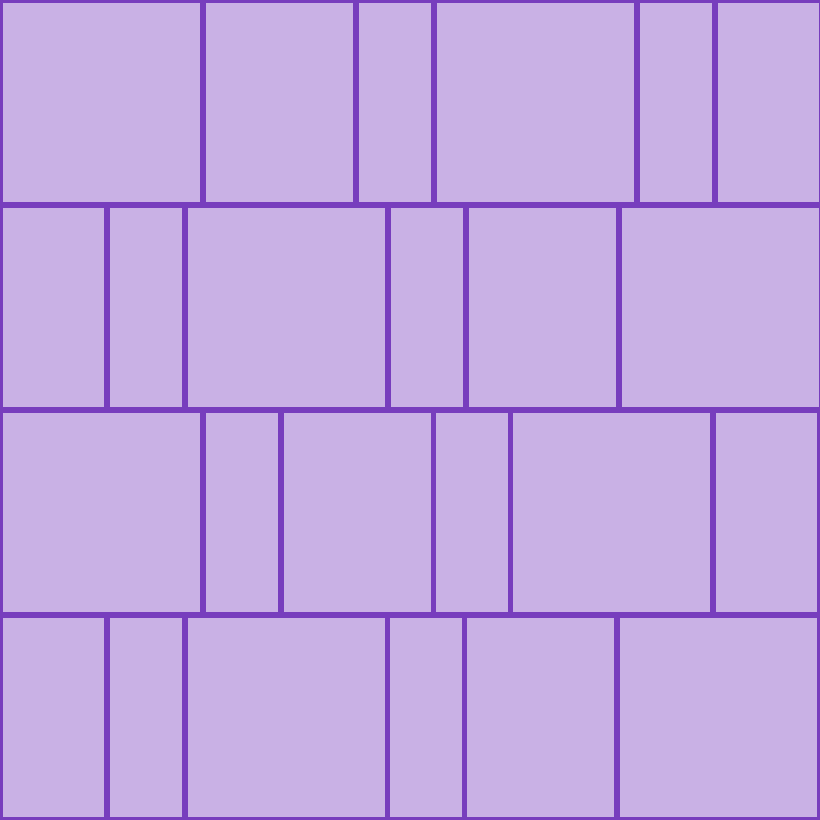
Tudor: No one is sure why it’s named the Tudor pattern, but regardless of that it offers a popular design that gives another random appearance. Unlike a broken bond, the Tudor pattern is designed with three slabs of completely differently shaped slabs.
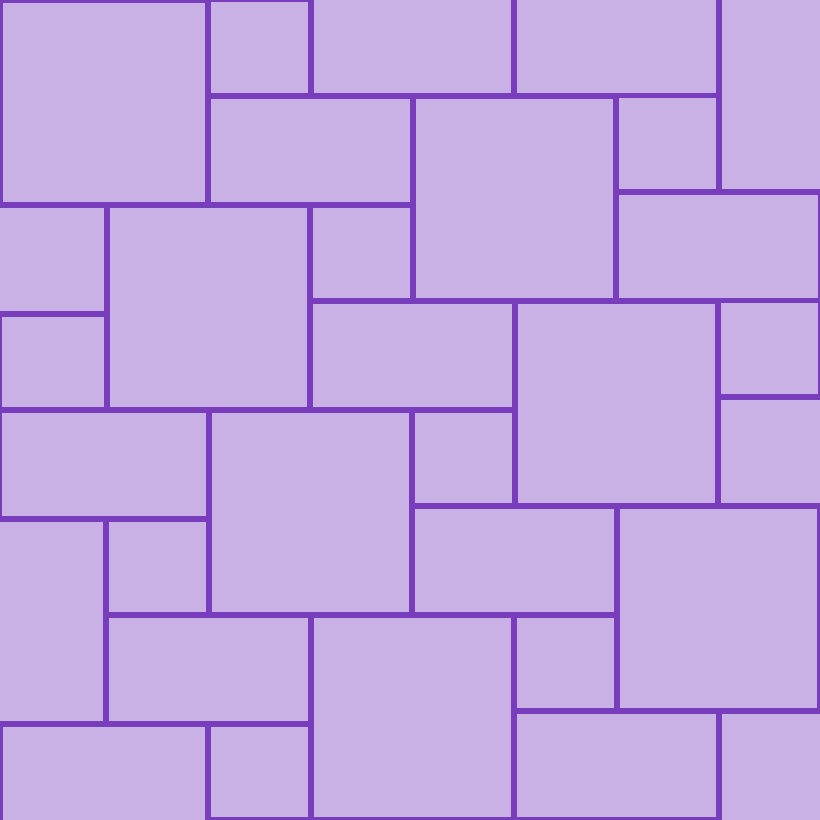
Multiple-gauged width: The multiple-gauged design is similar to the stretcher bond pattern. This design is still random, but can also offer a slightly uniform appearance. Each slab will typically be of different lengths and widths; laying each of the slabs in rows or columns. The more different size slabs you use, the more random they can appear.
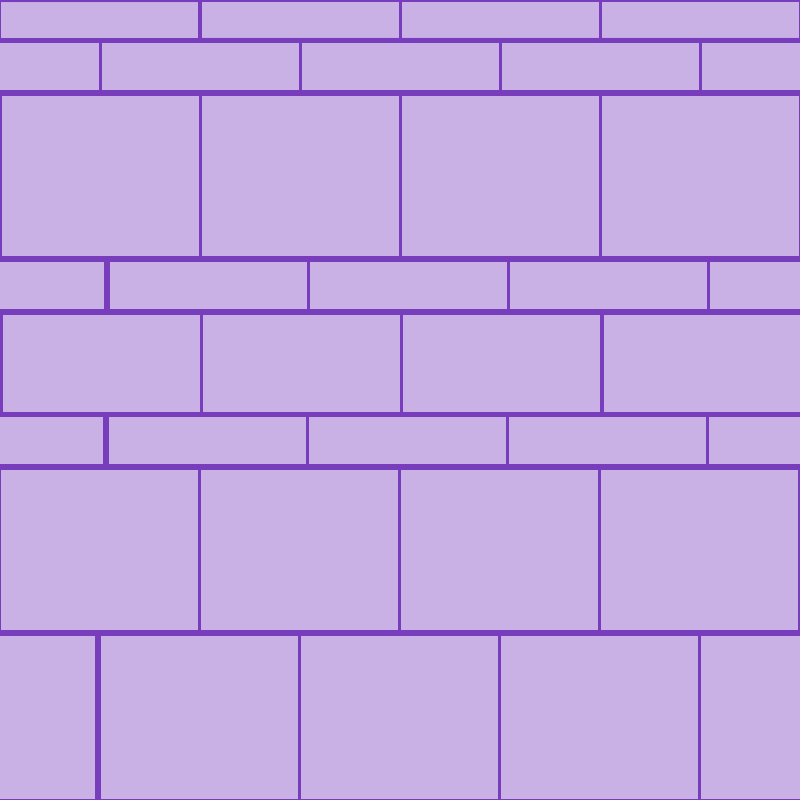
Do you want to add paving to your driveway? Check out our guide to paving a driveway.
For any other advice or support, you can speak to our team via the helpline or using the chat box in the bottom right.















